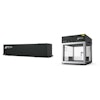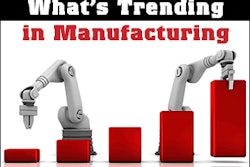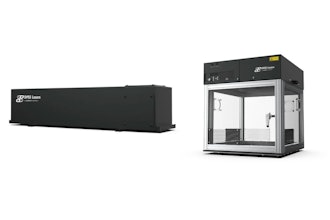
3D printers are revolutionizing various industries, from toy making to the production of iPhone cases. But one of the latest trends in 3D printing is especially tasty. These machines now are capable of producing various food items, including confections, pastas and more.
3D printing has become immensely popular over the last year, and the technology seems to be able to create nearly any item you could ever want to own — or eat. At the International Consumer Electronics Show, which took place in Las Vegas in January, 3D-printed confections took center stage. While pastry and sugar artists spend years perfecting their skills to create delicate, edible masterpieces, these machines can craft sugar- and chocolate-based sculptures in essentially any shape imaginable.
Manufacturers of 3D printers are beginning to offer models geared toward the consumer market, so that anyone can print a gourmet dinner right in the kitchen. But these printers currently come at a hefty price. Some 3D printing companies have models that will be available for $5,000 to $10,000, but 3D Systems Inc. expects its full-color printer to sell for about $100,000 later this year.
In the meantime, food manufacturers are beginning to take notice of the technology and the product customization abilities it offers. 3D Systems recently announced it has entered into a joint-development agreement with The Hershey Company to explore opportunities for harnessing 3D printing technology to create confectionery products.
Companies like Hershey view 3D printing as an opportunity for them to present consumers with unique products that may not have been possible without the technology. William Papa, Vice President and Chief Research and Development Officer for Hershey, said, “Whether it’s creating a whole new form of candy or developing a new way to produce it, we embrace new technologies such as 3D printing as a way to keep moving our timeless confectionery treats into the future.”
Italian food maker Barilla is using 3D technology to create custom pasta shapes. The company, which produces a quarter of all pasta sold in the United States, has been working with TNO Eindhoven to design a pasta printer geared toward restaurants. Barilla hopes these printers will offer two benefits: fast completion of pasta dishes and custom-designed noodles. Barilla’s moneymaker in this venture would be the pasta cartridges the company would produce. Chefs would place these ingredient cartridges in their 3D printer, and then print out the custom creations.
Even NASA is getting into the 3D printing game. It’s well-known that feeding astronauts in space is a challenge, and NASA views 3D printed food as a possible solution. The space agency recently awarded a $125,000 grant to Systems & Materials Research to develop a pizza printer. All astronauts would need is some shelf-stable powdered food and oils in order to print out an instant pizza night.
Many proponents of the technology view it as a potential solution to global food insecurity. Some experts say that 3D food printers’ ability to produce nutritious food on demand could help certain regions prone to food scarcity. In addition, 3D printing could reduce the strain on natural resources, while reducing the amount of food waste.
While 3D printed food remains an expensive novelty for most, it could offer vast benefits for both food manufacturers and consumers in the coming years. It will be interesting to see if and how this technology changes the process of food production and distribution around the world.
What do you think about 3D printing? Would you consider using this technology in your business? Sound off in the comments below.






















